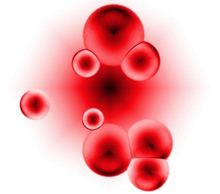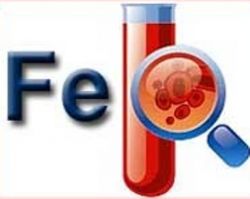Causes of low hemoglobin in women
The causes of anemic conditions in women are varied. Typical provoking factors include physiological aspects: menopause, menstruation, diseases of the reproductive system, changes in the structure of the uterine endometrium.
The reasons for a decrease in hemoglobin in women, in fact, are no different from the factors that provoke anemia in children or men. Statistical data regarding morbidity among women is very approximate, and hemoglobin levels vary depending on the region of residence and the age of the patient. In our country, about 700,000 women with suspected anemia are registered every year, and 40% of this number are female children and adolescents. Why is low hemoglobin in women so dangerous?


The risk group usually includes pregnant, lactating, menopausal and older women, as well as those of reproductive age and those having regular menstruation. The danger lies in the intense increase in symptoms and the rapid clinical development of the disease, which is not typical for children or men. The situation is complicated by the presence of chronic diseases.
CAUSES OF LOW HEMOGLOBIN IN WOMEN
Hemoglobin is a complex protein of red blood cells that make up the blood. Formed by the fusion of a simple protein with atomic iron. Necessary for the transport of oxygen to the internal organs from the lungs, and for the return delivery of oxide. The process is vital and is a necessary link in maintaining an adequate acid-base balance in the blood. The causes of anemia in women are quite varied, but iron deficiency cannot be interpreted as an independent disease. Most often, anemia is caused by tissue degeneration and dysfunction of internal organs and systems.
Depending on the cause and the main mechanism of development, female anemia is divided by hematologists into three large groups. Why does low hemoglobin occur in women:

Any of these reasons can greatly reduce hemoglobin levels. But at the same time, a woman’s condition can be quite satisfactory, without obvious signs of anemia, since the body has the ability to adapt.
CAUSES OF LOW HEMOGLOBIN IN WOMEN AFTER 40
 Anemic syndromes are characteristic of 25% of women over the age of 40 years. The main reasons for this condition lie not in degeneration of blood tissues, but in chronic diseases that are most often found in this age group. For example, iron deficiency is caused by tumors of various organs, erosions, ulcers, intestinal diverticulosis, hormonal imbalance during menopause, vascular atherosclerosis or long-term infectious and inflammatory processes.
Anemic syndromes are characteristic of 25% of women over the age of 40 years. The main reasons for this condition lie not in degeneration of blood tissues, but in chronic diseases that are most often found in this age group. For example, iron deficiency is caused by tumors of various organs, erosions, ulcers, intestinal diverticulosis, hormonal imbalance during menopause, vascular atherosclerosis or long-term infectious and inflammatory processes.
Causes of iron deficiency anemia in older women– unhealthy diet, especially with a lack of high-calorie food, or with poor absorption of vitamins and animal proteins; lack of folic acid and B12. Anemic conditions have typical age-related features: nonspecific symptoms that are often masked as signs of the underlying disease. Cardiovascular failure develops and worsens, ischemia and angina appear. Encephalopathy is diagnosed.
Low hemoglobin in women after 50 years, the causes of which are due, in particular, to general wear and tear of the body, is typical for this age. Hematologists do not consider this a pathological deviation from the norm and prescribe only supportive treatment.
 Why can low hemoglobin in the blood of women of retirement age still be dangerous? According to several studies, women aged 50+ and suffering from anemia are at risk of early onset dementia. Because the brain does not receive the required amount of oxygen and neurons are irreversibly damaged.
Why can low hemoglobin in the blood of women of retirement age still be dangerous? According to several studies, women aged 50+ and suffering from anemia are at risk of early onset dementia. Because the brain does not receive the required amount of oxygen and neurons are irreversibly damaged.
LOW HEMOGLOBIN IN WOMEN: CAUSES AND TREATMENT (SYMPTOMATIC)
It all depends on what caused the iron deficiency. In case of bleeding, all efforts are directed towards stopping it, in case of exacerbation of diseases, the main symptoms of the disease must be eliminated, in case of chronic primary anemia, replacement therapy is prescribed. But there are general principles for correcting hemoglobin levels:
- Prescribed drugs for oral administration (containing divalent heme iron): “Heferol”, “Ferlatum”, “sorbifer”. In addition to iron, they contain B12, ascorbic and folic acids.
- Means are used to accelerate the absorption of iron from the digestive tract. They are taken in courses of two months, until a detailed blood test shows an acceptable level of protein. Low hemoglobin in a woman (84 - 92 g/l), the cause of which may be hidden, for example, in chronic inflammation, requires treatment by intravenous administration of drugs. This is regarded as an acute anemic condition, since the generally accepted norm for a healthy middle-aged woman is 120-150 g/l.
- Intravenous medications are prescribed for diagnosed dystrophy of intestinal tissue and for gastric bleeding that complicates the absorption process. This category of products includes “Venofer”, “Ektofer”, “Ferrum”.
 If low hemoglobin is diagnosed in women and its causes are atypical, then treatment with folk remedies can do little to help. You should not even try to eliminate the state of iron deficiency on your own, since the complex of provoking factors is individual in each case, and all folk recipes are based on the same components. In addition, only a doctor can calculate the correct dosage for replacement therapy.
If low hemoglobin is diagnosed in women and its causes are atypical, then treatment with folk remedies can do little to help. You should not even try to eliminate the state of iron deficiency on your own, since the complex of provoking factors is individual in each case, and all folk recipes are based on the same components. In addition, only a doctor can calculate the correct dosage for replacement therapy.
An excess of iron will affect the body no less severely than anemia itself. Attempts at self-treatment can blur the clinical picture of the disease, which will make it very difficult to establish the correct diagnosis and prescribe appropriate drug treatment.
If there is a suspicion of low hemoglobin, the causes and consequences (possibility of chronicity of the process) in women are established through laboratory tests. However, the easiest way is to take care of your own health and pay attention to the prevention of anemia.
 Almost all causes of low hemoglobin in women are easily eliminated at the initial stage, but the chronic form of the disease is difficult to correct and requires a long course of treatment. Hematologists have identified several risk groups: pregnant women, women who have undergone abdominal surgery, those with diabetes, and organ failure.
Almost all causes of low hemoglobin in women are easily eliminated at the initial stage, but the chronic form of the disease is difficult to correct and requires a long course of treatment. Hematologists have identified several risk groups: pregnant women, women who have undergone abdominal surgery, those with diabetes, and organ failure.
They are recommended to take blood biochemistry tests at least once every three months, as well as undergo preventive and precautionary courses of treatment, which include iron supplements, multivitamin complexes and dietary nutrition.




